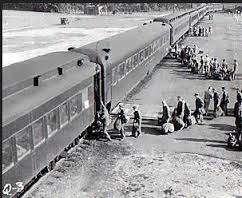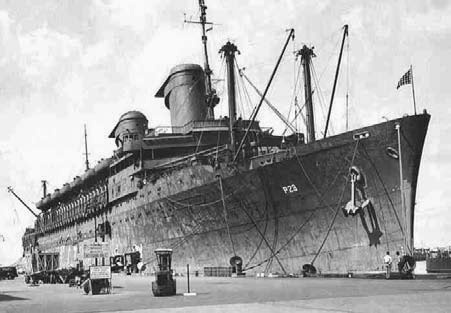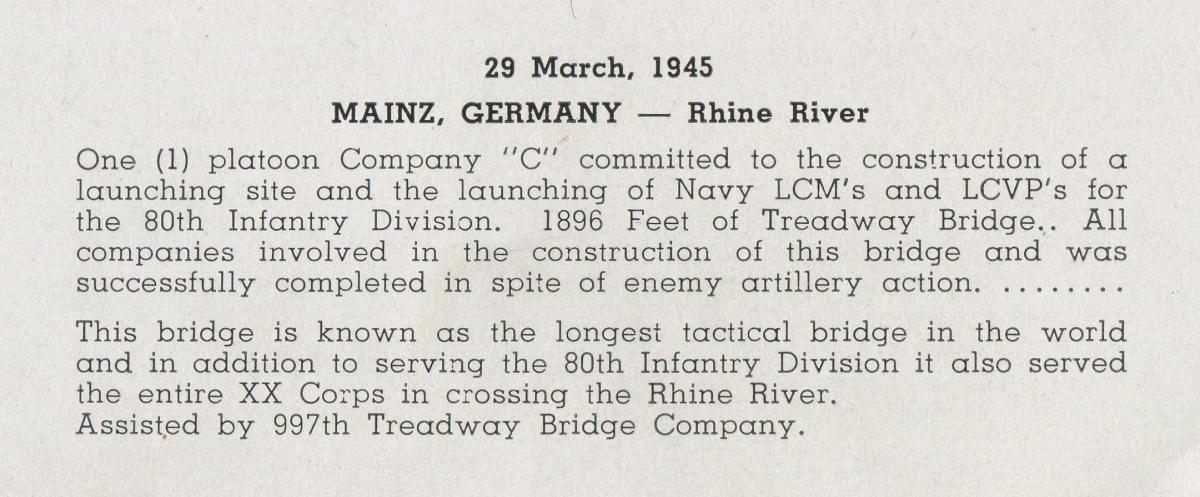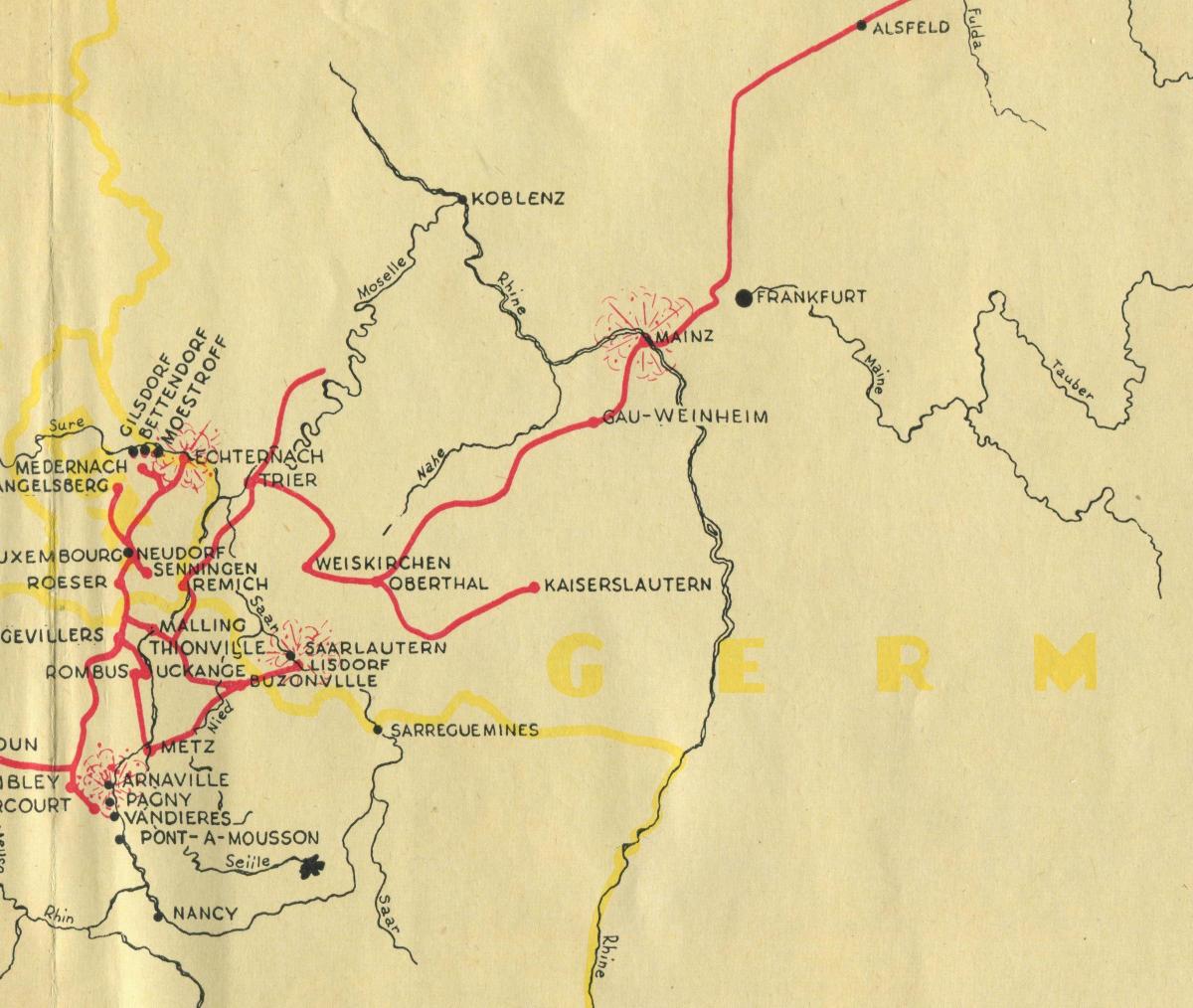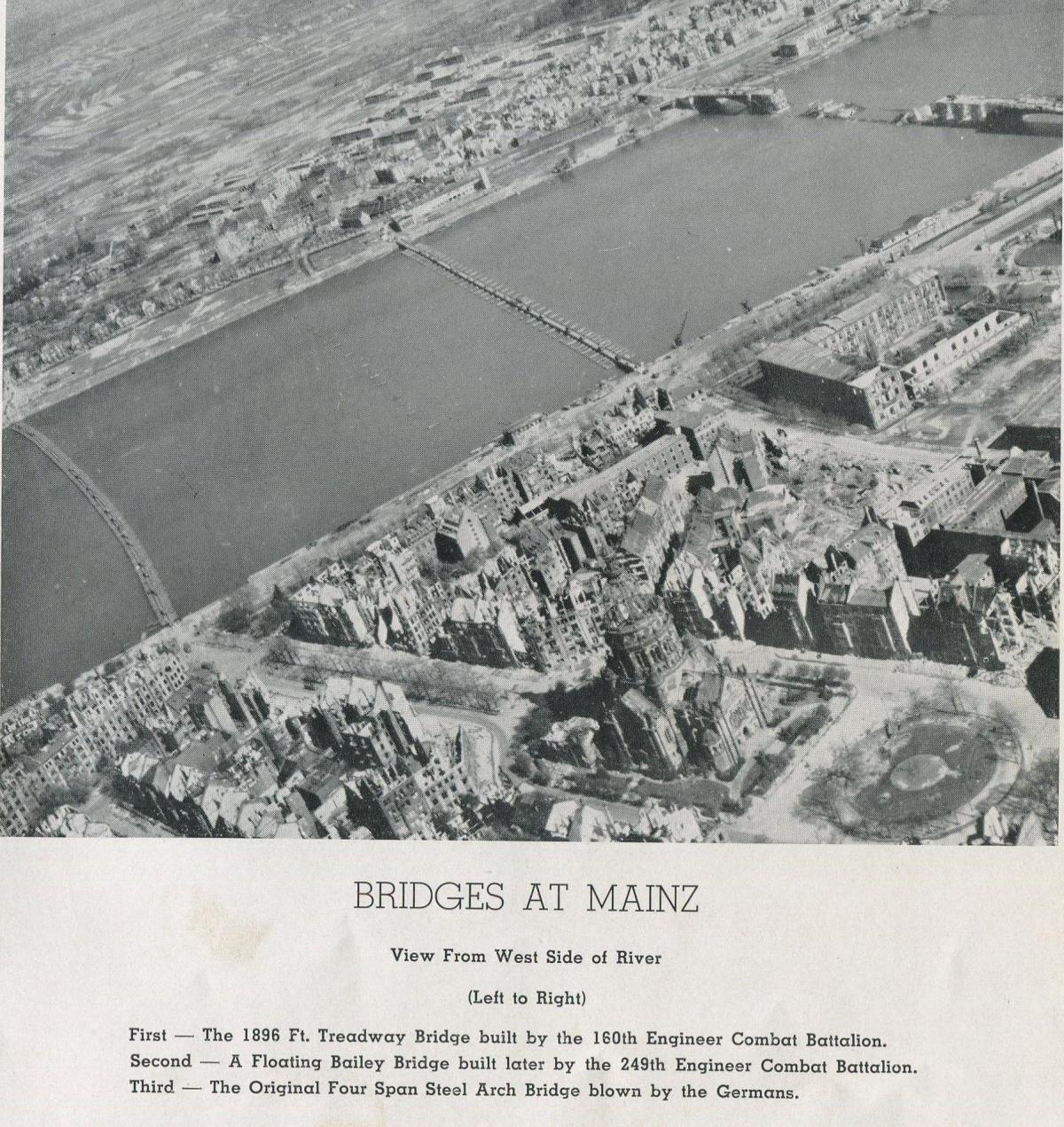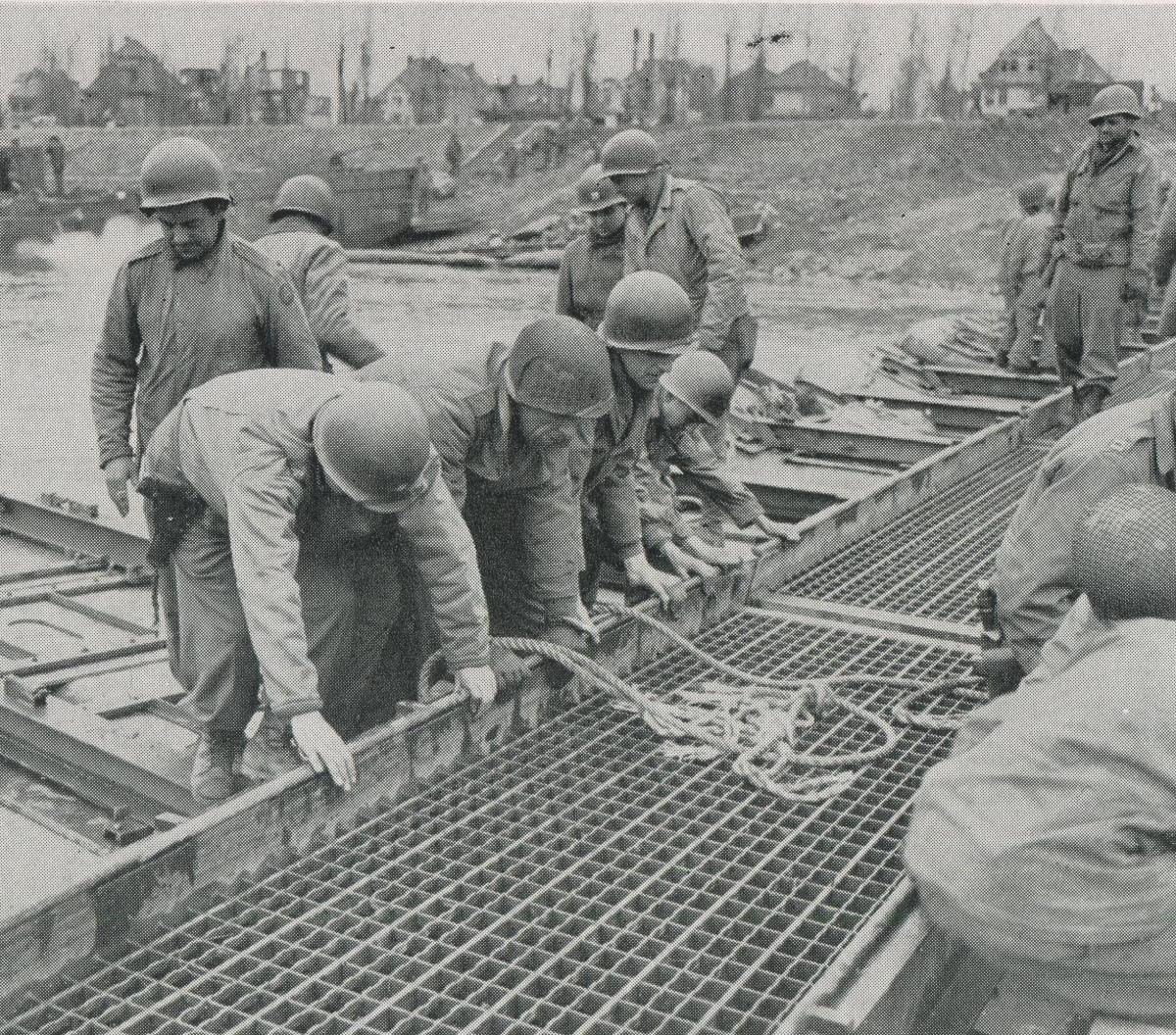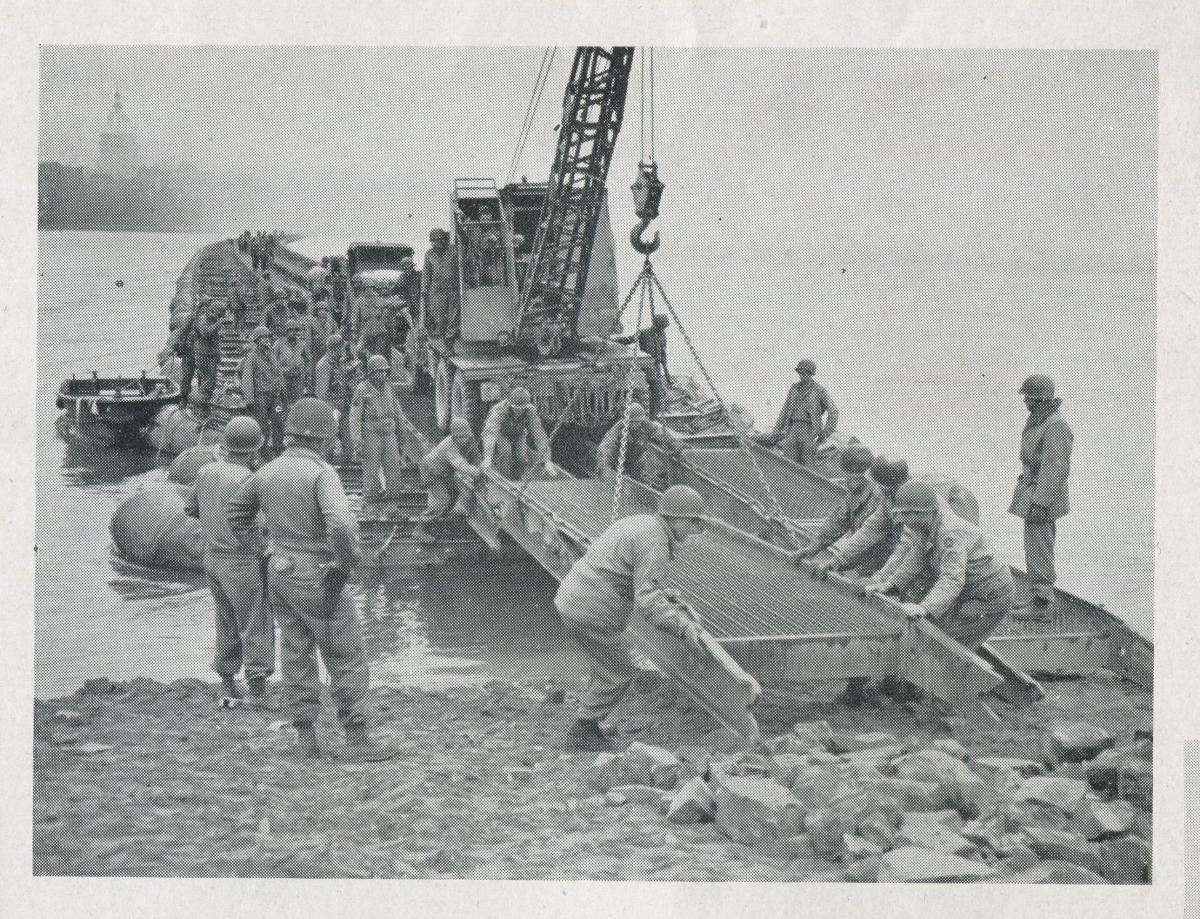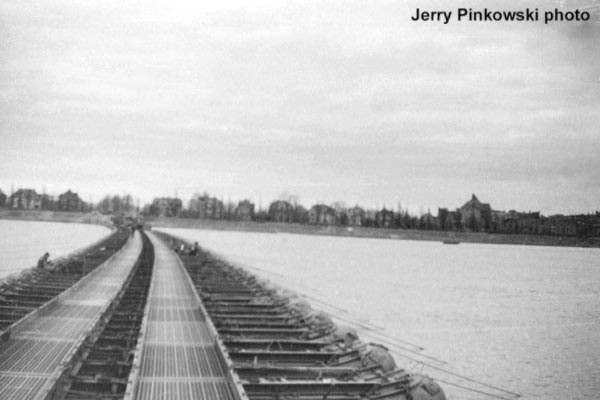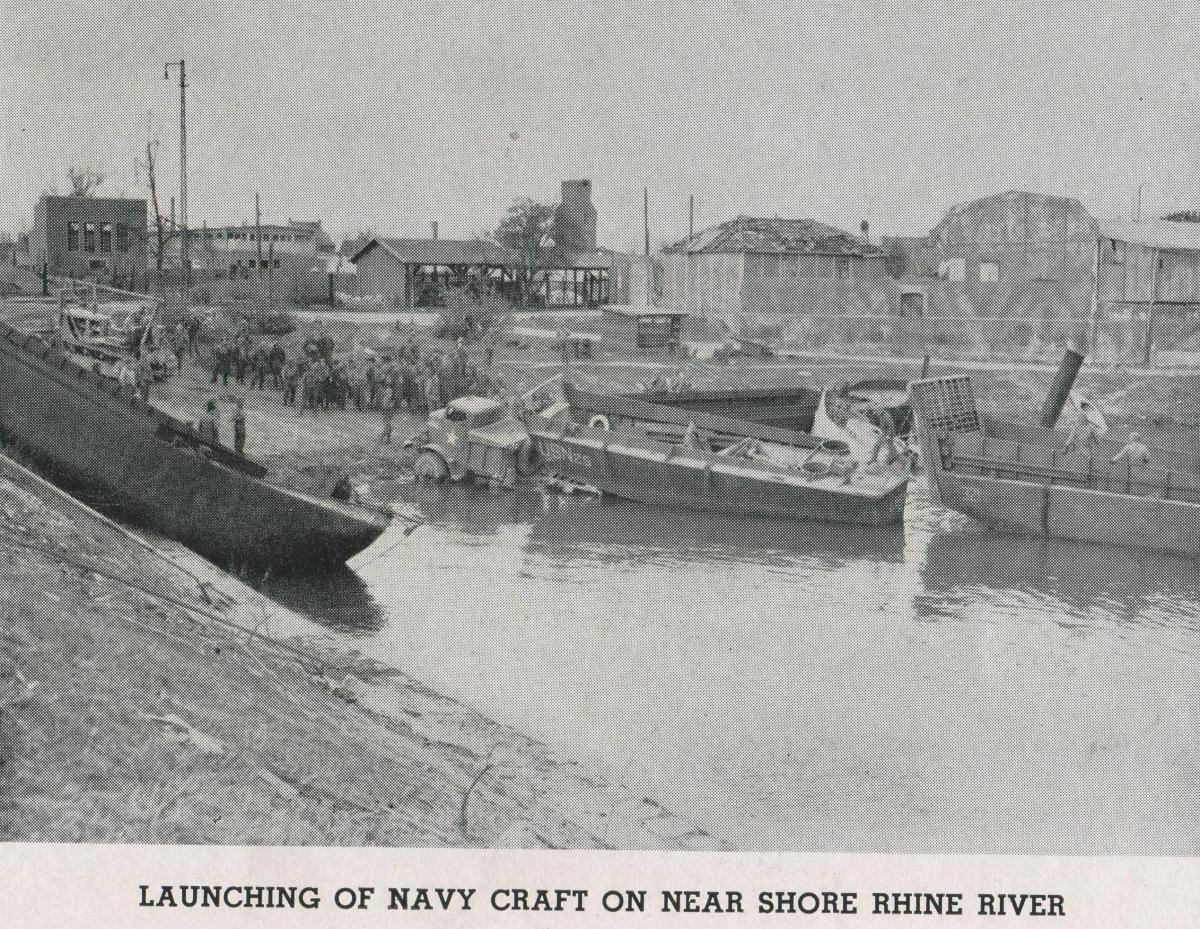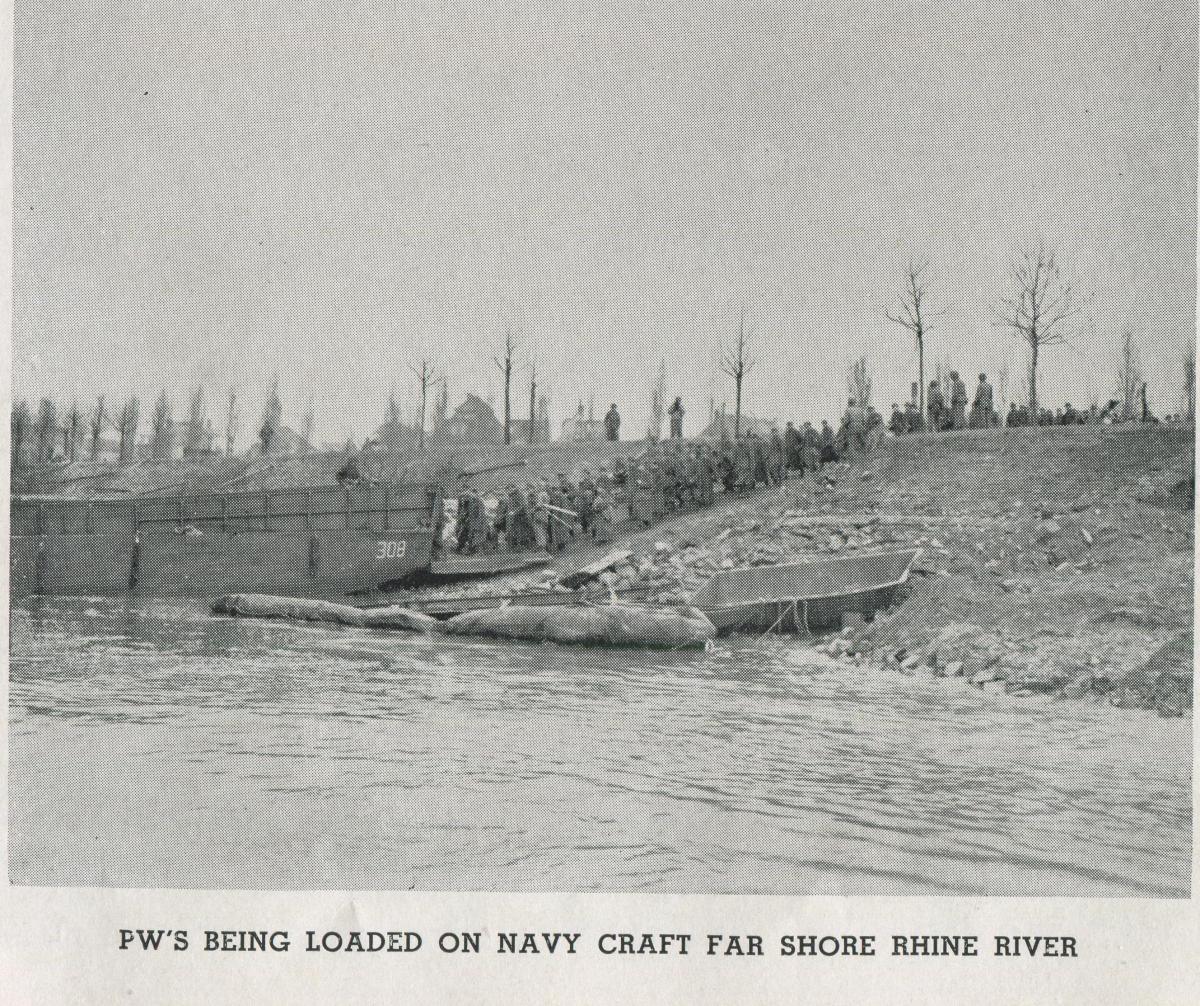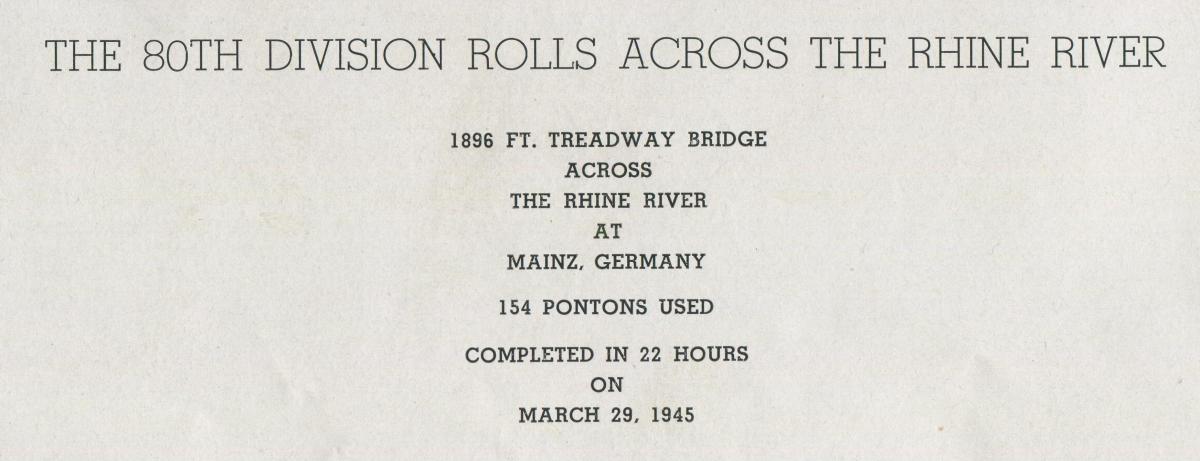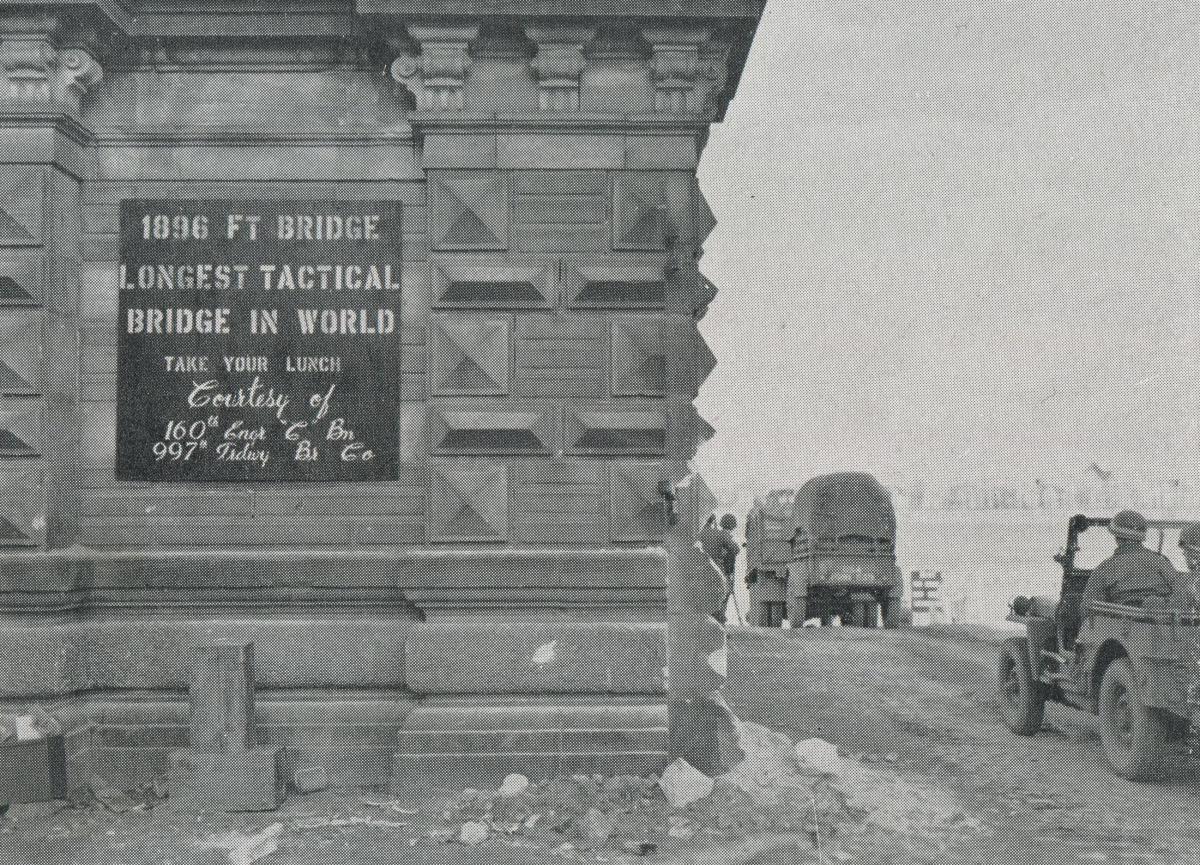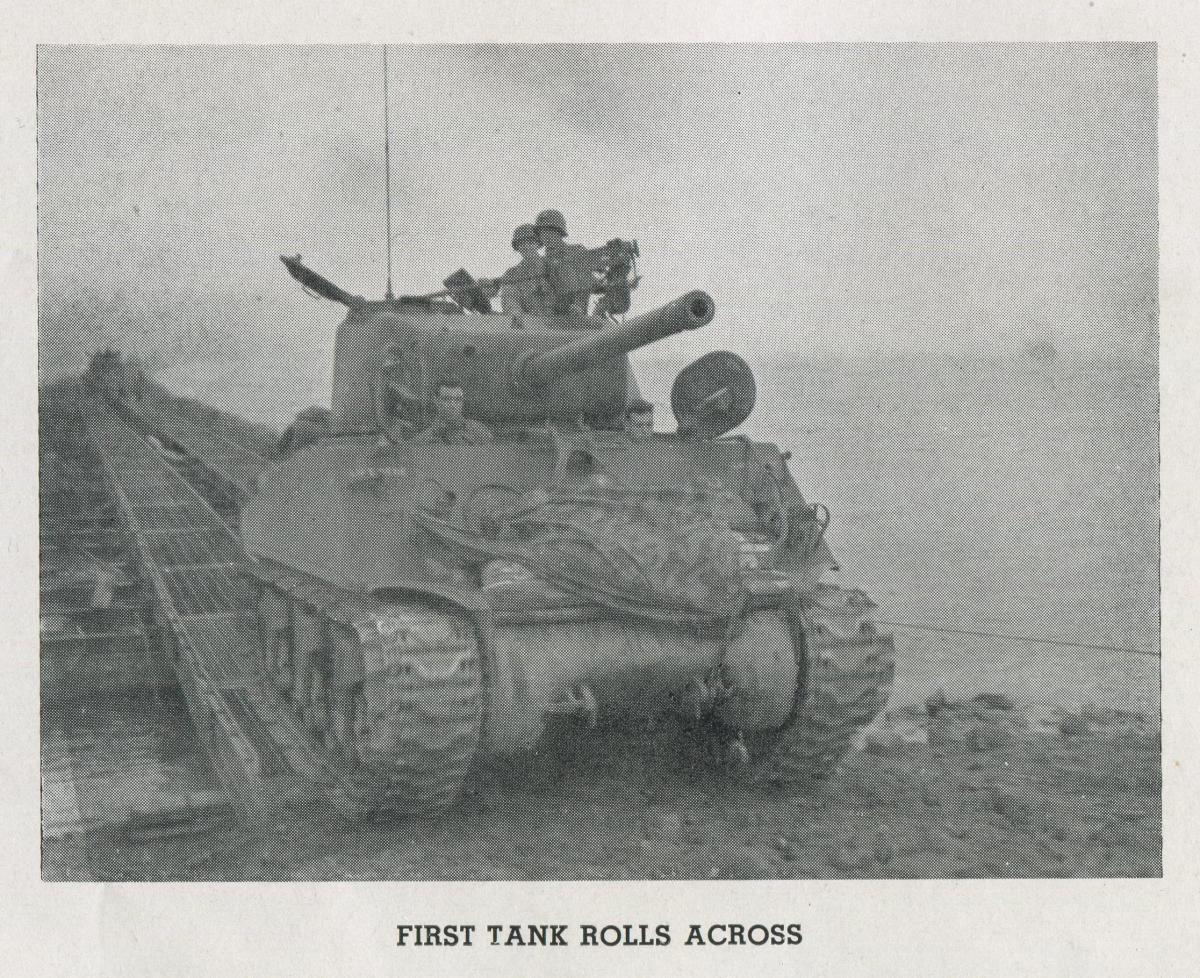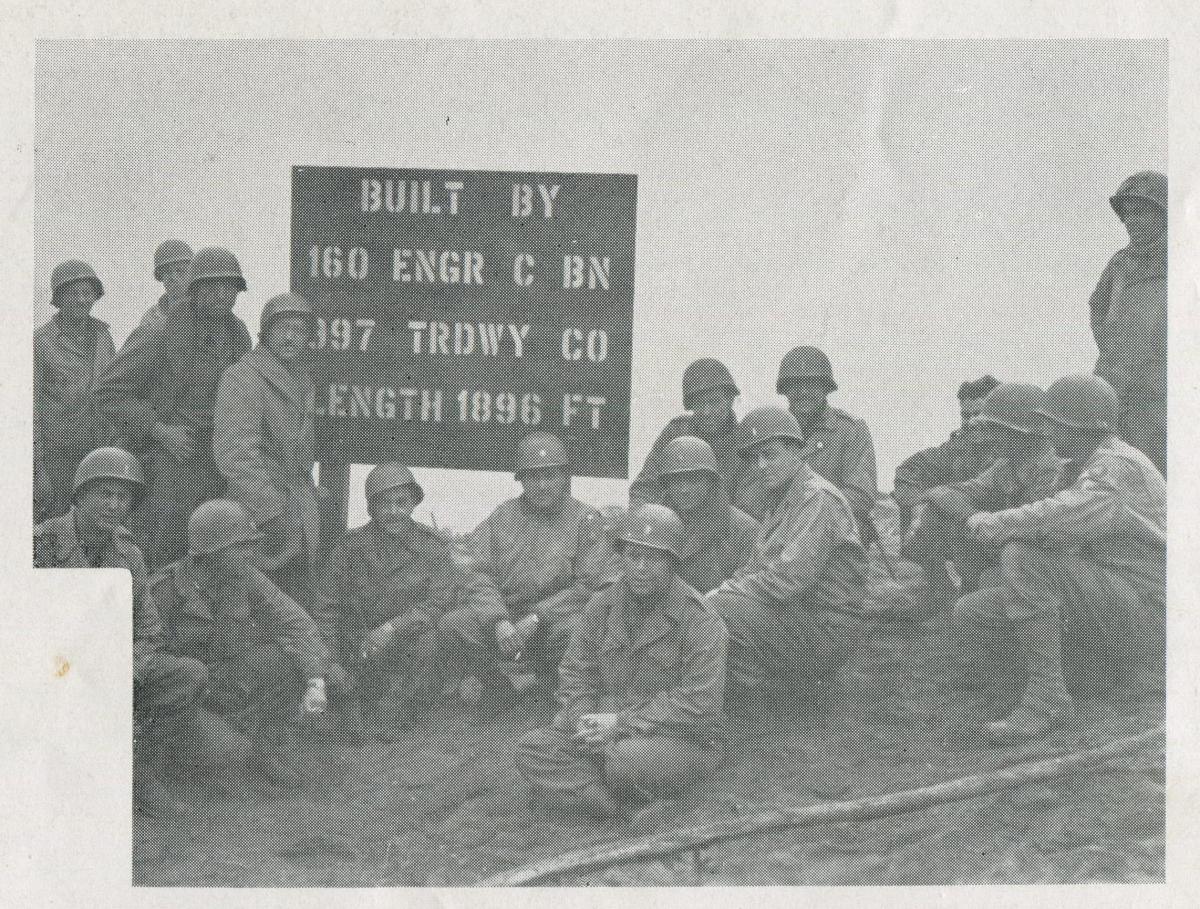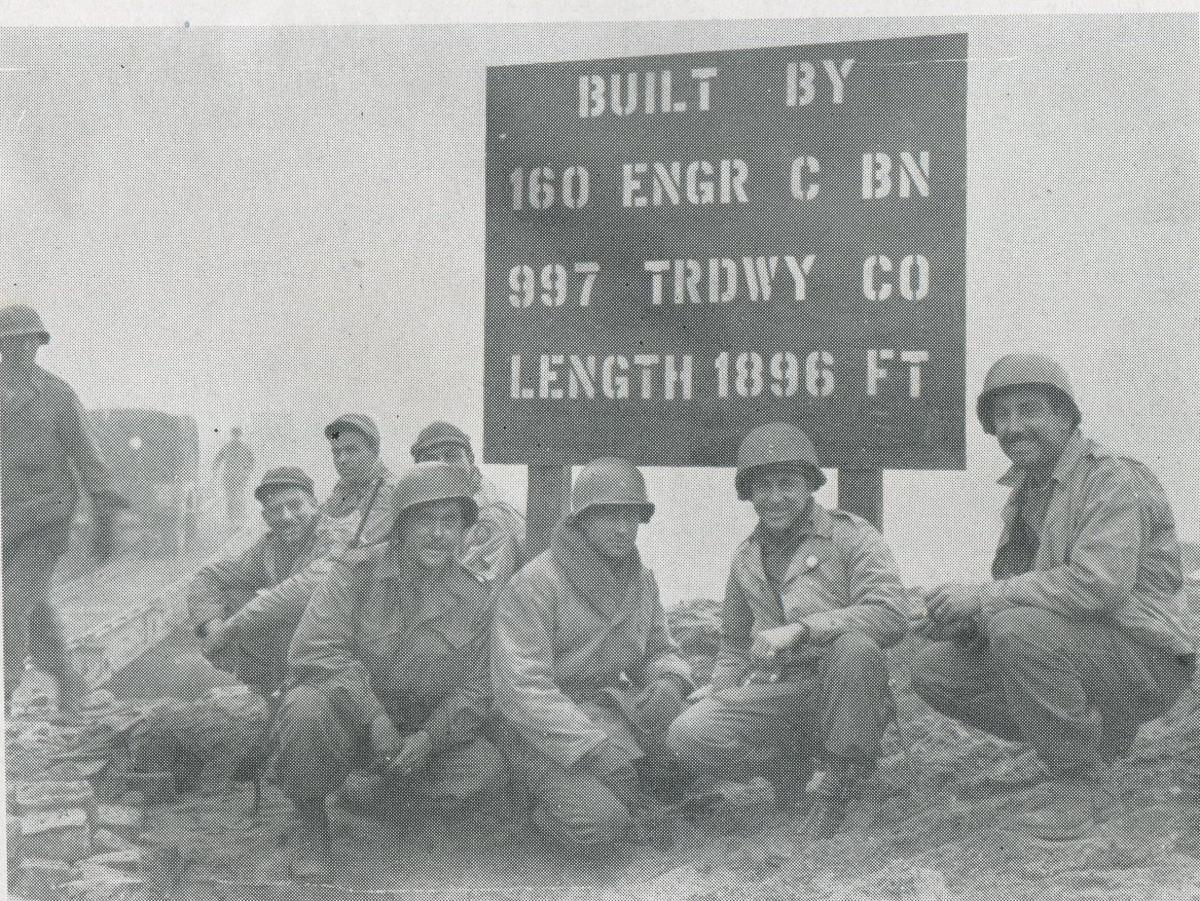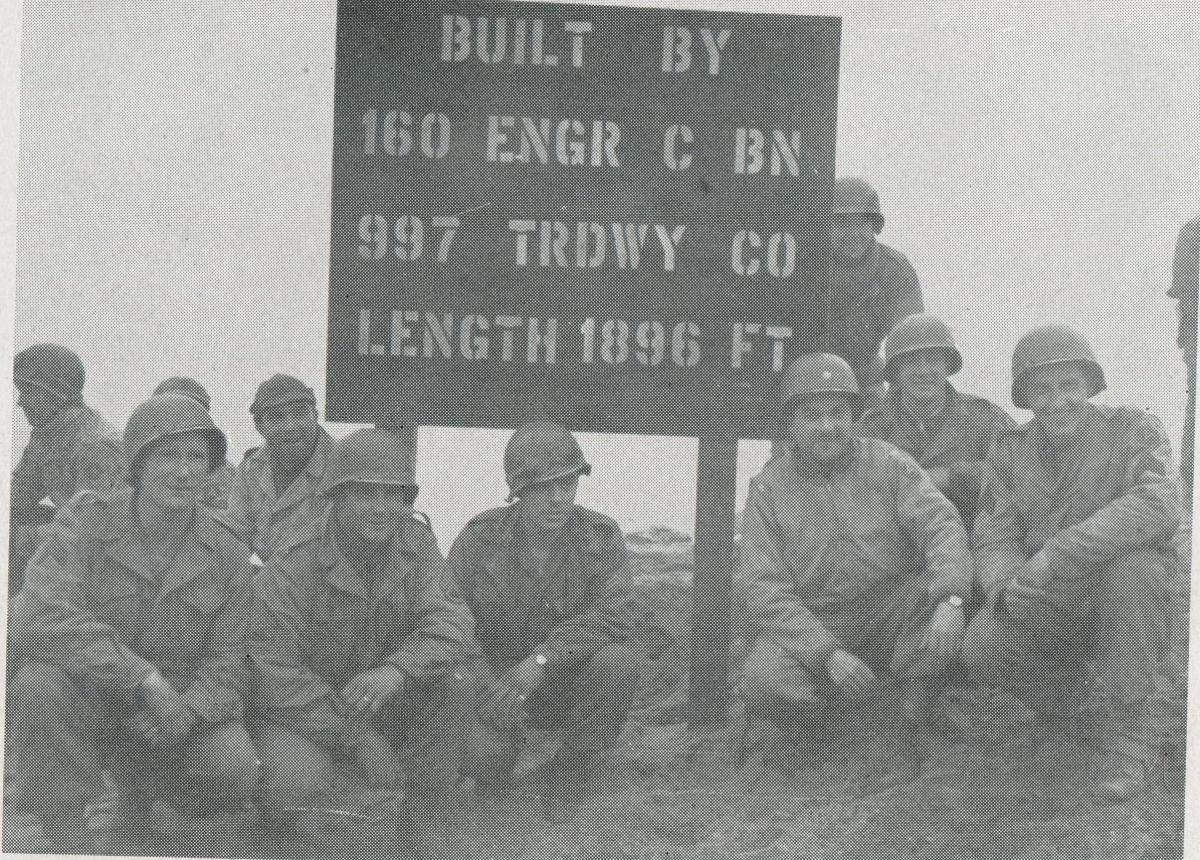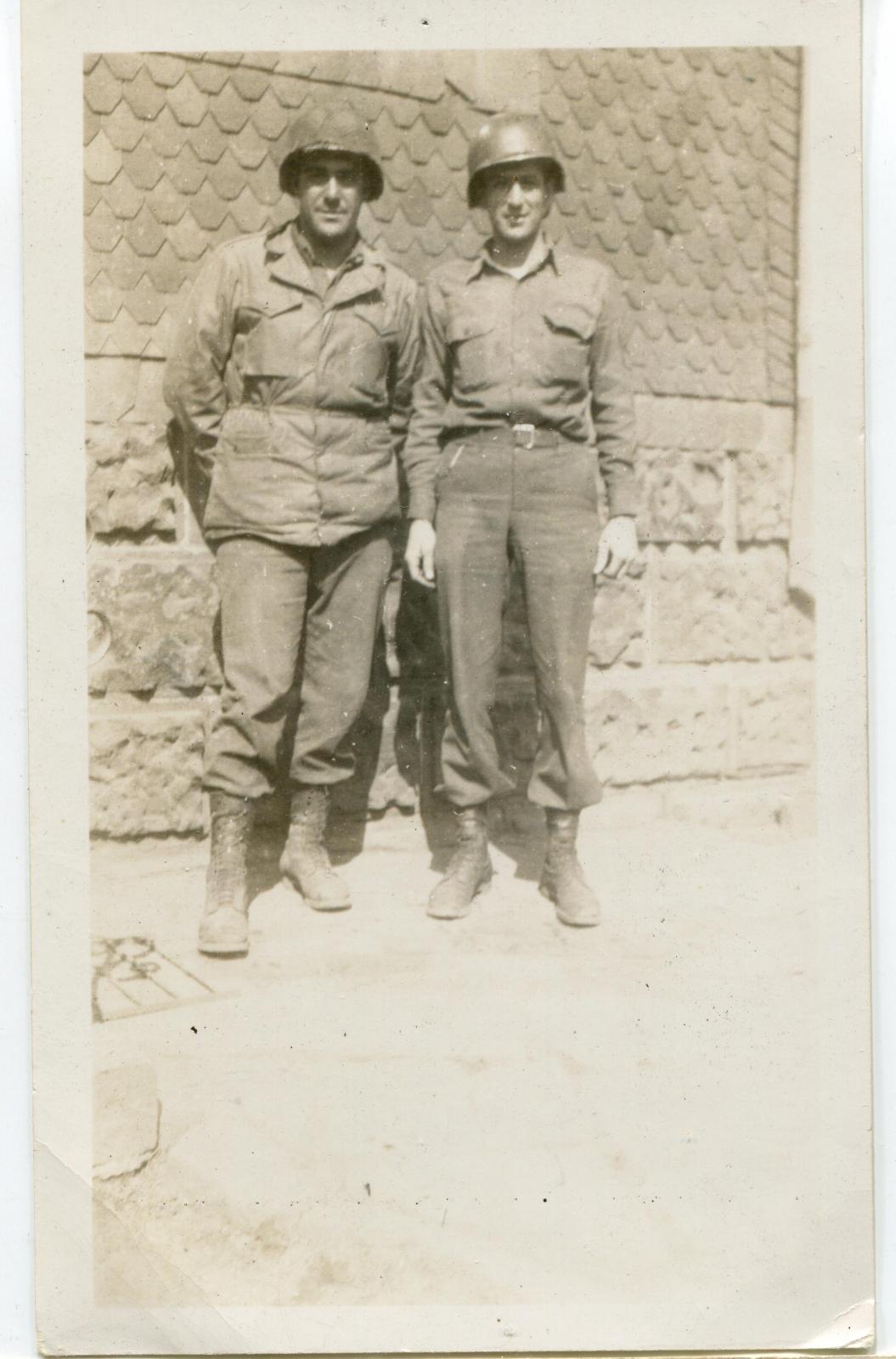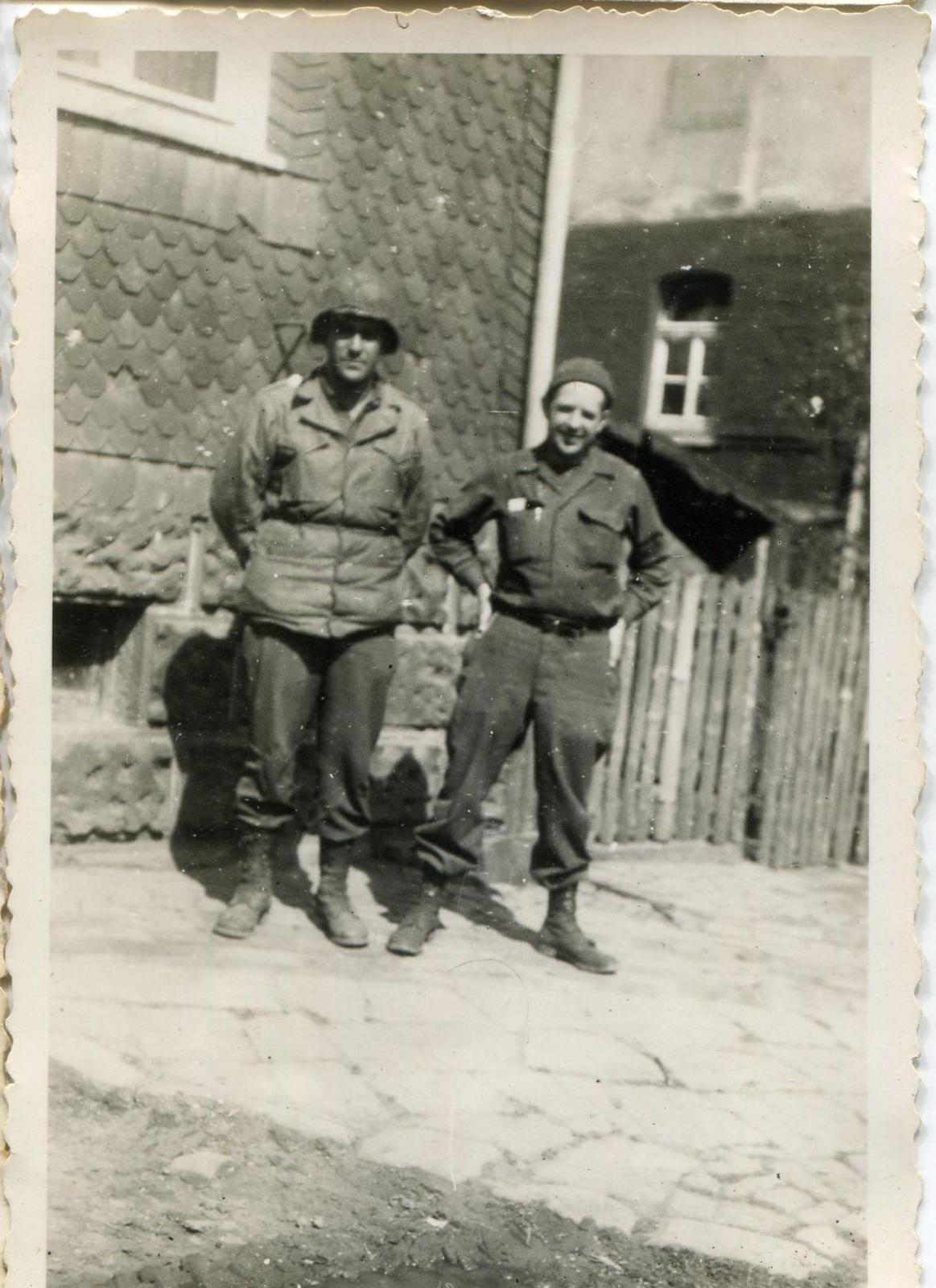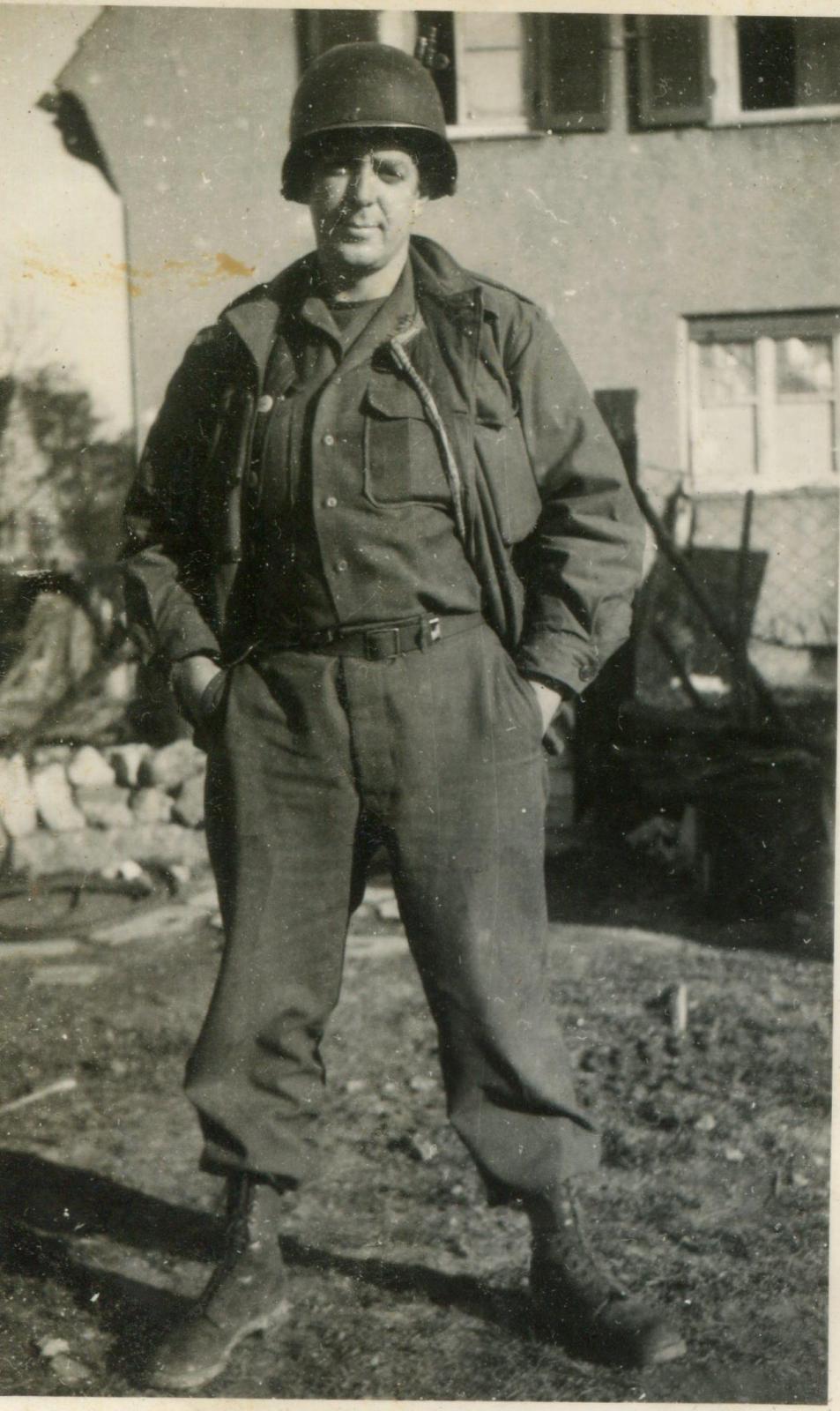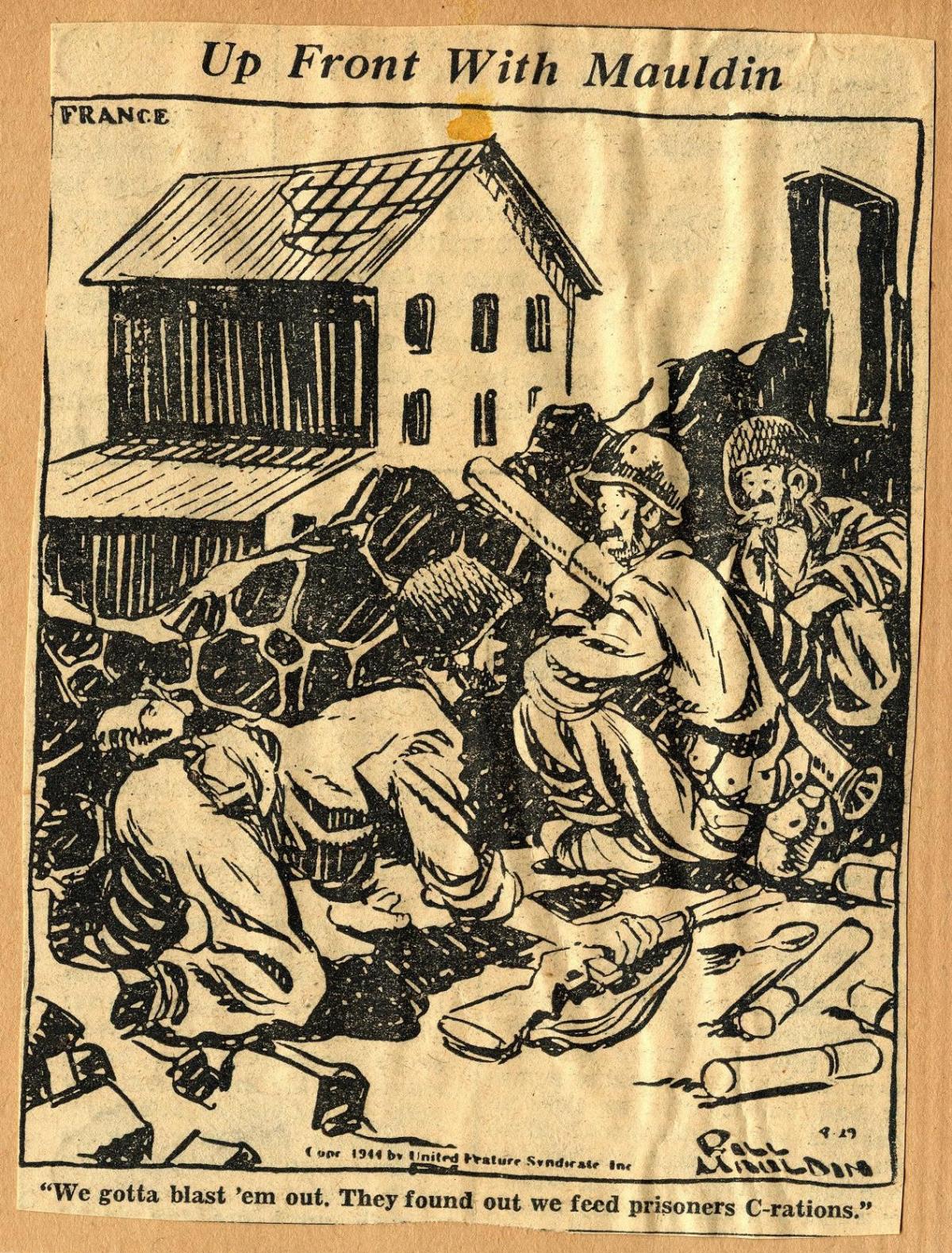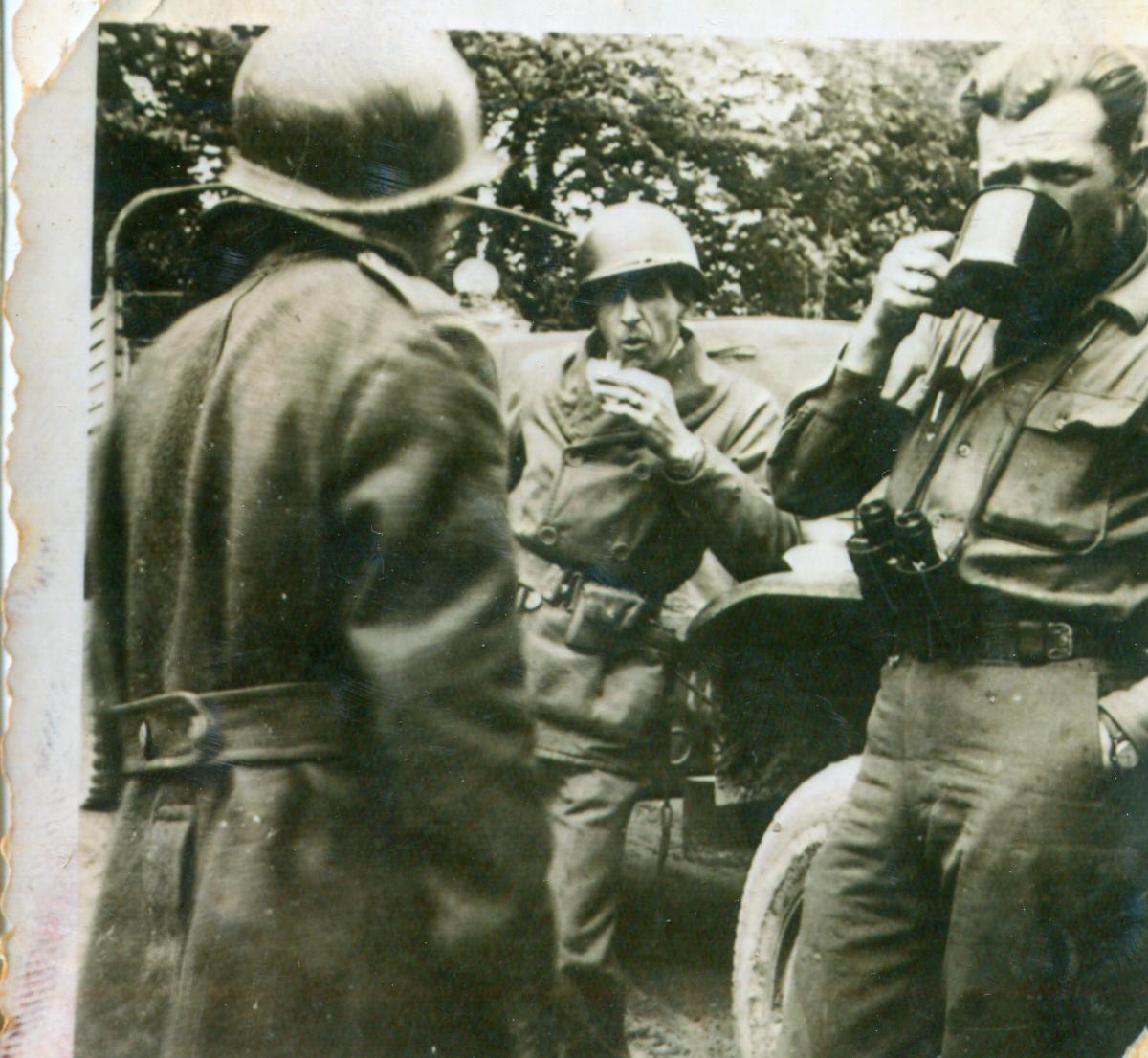
+- Forums (http://www.6thcorpscombatengineers.com/forumnew)
+-- Forum: Miscellaneous Topics (http://www.6thcorpscombatengineers.com/forumnew/forumdisplay.php?fid=48)
+--- Forum: Introduce Yourself! (http://www.6thcorpscombatengineers.com/forumnew/forumdisplay.php?fid=14)
+--- Thread: 160th Engineer Combat Battalion WW II ( new member) (/showthread.php?tid=5035)
160th Engineer Combat Battalion WW II ( new member) - glen blasingim - 03-13-2016
Account from Edwin N. Blasingim, First Sergeant, 160 Engineer Combat Battalion, Company B, as told to his son.
The 160 Engineer Combat Battalion completed overseas training at Fort Rucker in southern Alabama and rode a train to Camp Miles Standish on the south side of Boston, it was June of 1944. After a couple of weeks at Camp Miles Standish they boarded a train for the short ride to Boston Harbor and the U.S.S. West Point, a troop ship converted from the luxury liner S.S. America. It was a short walk from the train to the gangplank but the gangplank was long and steep. Dad didn't think he was going to make it up to the ship with all of his gear. Once on the ship they went to rooms below deck, each man stuffed his gear into a bunk and climbed in with it. Dad remembers how homesick he was on that trip. While he was in the states he often had an opportunity for a visitor or maybe a short leave, but now he was away and not coming home until the war ended, or maybe not ever.
The West Point, nicknamed " The Gray Ghost " was a fast ship and traveled without escort. It sailed at 22-24 knots, full power speed, and set a zig-zag course that made it difficult to catch or intercept.The U.S.S. West Point served all over the world and it made five consecutive round trips from the United States to Europe carrying troops in 1944. The 160th was on the first of these trips. They left Boston Harbor on June 27,1944 with 7,706 men and a crew of 760. The 159 Engineer Combat Battalion was among the passengers on that trip.
The U.S.S. West Point was not a cargo ship but it carried a tremendous amount of mail on the lower decks and cargo holds. Sailing was rough, sea sickness was a nuisance but not a major problem. When you were eating you had to hold on to your food or it could slide off of the table. Dad's usual beverage was coffee, from a tin cup. Guard duty was a regular activity, the soldiers guarded men and equipment in short shifts. The bow of the boat was off limits but some guard posts included a pass to the bow. Dad said that when he was out there the swells were huge, dwarfing the ship. The bow would rise and fall sending waves over the bow deck.
The U.S.S. West Point crossed the North Atlantic and sailed up the Dirth of Clyde to it's destination at Green Rock, near Glasgow, Scotland. It was night but not very dark with the long summer days and as far north as they were.The ship, Scotland and England were totally blacked out. It was July 3,1944. The 160th disembarked and boarded a train that took them south to their camp at Blithfield Hall Manor Grounds near Rugeley, England, about eighty miles northwest of London. Disembarking, loading on the train, the train trip and getting settled in their new temporary home took a day and it was midnight on the Fourth of July before they were properly fed and had a place to sleep.
The 160th stayed at Blithfield Hall Manor Grounds for about one month. While they were there they stayed in shape and trained, they did a lot of foot work. They marched the roads and passed through many small towns in the English countryside. The roads were not well paved and the cars were very strange. They went on many hikes through the woods with light packs and they convoyed often, practice for their upcoming adventures in France and Germany. English food was not very appealing and Dad ate G.I. food mostly. A common meal was C-rations boiled in a large pot still in the cans.
When men and equipment were ready the 160th boarded a train to the port of Southampton on the southern coast of England where they boarded a ship that took them across the channel to Normandy.
Camp Miles Standish troop train
U.S.S. West Point
Glen Blasingim
160th Engineer Combat Battalion WW II ( new member) - Walt's Daughter - 03-14-2016
I enjoyed reading this first-hand account of the start of his military journeys in WWII.
160th Engineer Combat Battalion WW II ( new member) - glen blasingim - 03-22-2016
Account from Edwin N. Blasingim, First Sergeant, 160 Engineer Combat Battalion, Company B, as told to his son.
Combat Engineers commonly use floating bridge sections to ferry vehicles and supplies across rivers. In the early Fall of 1944, the 160 Engineer Combat Battalion was on the west bank of the Moselle River in the vicinity of Metz, France, making crossings and attempting to build bridges across it. The accurate artillery fire from the forts above Metz made bridge crossings nearly impossible. The Germans would destroy partially built bridges and wreck equipment still on the bank.The Engineers had ferried an infantry platoon across the Moselle before daylight that morning and they were "holding" the bridge head. These men were running short of everything, including ammunition.
The shelling had been constant all day and now into the night. If you were looking in the direction of a distant exploding round it was like looking at a camera flash. It blinded you temporarily and made the darkness seem even darker. When the rounds were coming in close by, you would hit the dirt and the explosion would make you bounce up off of the ground. In the dark, the screaming shells and explosions were louder than in the daylight. It was scary. Dad often says, " I was no hero, I just did what I had to do ".
What Dad and two other engineers had to do that night was to get the infantry what they needed to make it through the night. It was getting dark when they started. They commandeered a jeep and drove around, with no lights, rounding up the ammo, rations and supplies. They drove the jeep to the river bank and got it onto a damaged bridge section. Crossing was slow going and the men hoped that the Germans wouldn't target the jeep. The machine guns were not firing at night to keep from giving their positions away but if they valued the target enough, anything was possible. When they reached the far bank they unloaded the jeep and carried everything up the bank with a little help from the infantry. Back on the west side of the river they drove the jeep off of the makeshift raft and went several miles back to where B Company was bedded down. It was early morning and the company was sleeping in an open field. Nobody was sleeping very soundly and when the three men came in they were recognized and someone said, " We thought you guys had been killed ".
It was common practice for two men to roll their bed rolls together with a pup tent and share the bed roll. In fair weather the pup tent gave more warmth as part of the bed roll than as a tent. When it was shared by two men it preserved warmth even more. It had been a long day, Dad had a bed roll, some place. But he wouldn't be able to find it in the dark even if he knew which truck he threw it in. So a double became a triple and he got the middle, between two friends, shoes and uniforms on and rifles in their arms. They got a few hours rest. It wasn't the best sleeping but the men in foxholes across the river had it far worse.
Later that day, Chester Rydelski would be fatally wounded by a piece of artillery shrapnel.
Glen Blasingim
160th Engineer Combat Battalion WW II ( new member) - Walt's Daughter - 03-22-2016
This is superb. The kind of personal story I love to hear from my engineers. God bless them all.
160th Engineer Combat Battalion WW II ( new member) - glen blasingim - 03-22-2016
Thanks, Marion. I enjoy Dad's memories very much. For the last several years I have taken notes and have written down details and asked him the same questions on several occasions to make sure his recall was accurate and to make sure I understood correctly. My notes are difficult to follow, even for me. Dad will be the first to admit that his memory is not what it used to be, it used to be amazing. I don't know if he just didn't care to talk about some things or I just didn't show enough interest but in the last years he has shared a lot with me. That was a huge war and the view of it from the 160th is a narrow slice but I am sure that other men saw many of the same things that Dad did. God bless them all.
Glen Blasingim
160th Engineer Combat Battalion WW II ( new member) - glen blasingim - 04-02-2016
The 160 Engineer Combat Battalion built a lot of bridges in Europe but the one that Dad talked about most was the longest tactical bridge in the world, built across the Rhine River at Mainz, Germany. It was 1,896 feet long, used 154 pontons and was built under enemy fire. Dad remembers that there were many tent camps just west of Mainz. Camped there were engineers building the bridge, the U.S. Navy operating boats getting men and supplies across and the others were waiting for a bridge to get across the Rhine. These are a few pictures from those days.
Description from battalion book.
Map from battalion book.
Aerial view of the bridges across the Rhine at Mainz.
Four men have hands on treadway and are trying to squeeze ponton under by putting weight on it, Dad is third man from left with helmet highest.
Last treadway on far shore.
View showing anchoring of bridge.
U.S.Navy ferries across Rhine, doesn't come back empty.
Bridge ready for traffic.
Men who worked on bridge taking their bows. We cannot positively identify anyone in the photographs.
Herman S. Landrith and Edwin N. Blasingim at Mainz.
Herman S. Landrith and Oscar G. Anderson at Mainz.
Oscar G. Anderson at Mainz.
160th Engineer Combat Battalion WW II ( new member) - Walt's Daughter - 04-02-2016
Love this post. What an accomplishment to say the least. I think it's fantastic that you actually have a photo of your dad building the bridge. This is so cool.
I think some of those photos may wind up in part three of my documentary.
The sign that says, "take your lunch" is so funny.
160th Engineer Combat Battalion WW II ( new member) - glen blasingim - 04-02-2016
Thanks Marion, glad you appreciate this and hope others do too. You are welcome to use anything I post, the more that see it the better. I have about a dozen other photographs from this time, I left them out because I didn't want to make this too tedious.
Glen
160th Engineer Combat Battalion WW II ( new member) - glen blasingim - 06-21-2016
Accounts from Edwin N. Blasingim, First Sergeant, 160 Engineer Combat Battalion, Company B, as told to his son.
When Dad talks about things that happened in the war the subject of food often comes up. The food wasn't the best but the 160th was fed regularly. When the 160th was moving across Europe they sometimes camped where the retreating Germans had recently stayed and the camps showed that the Germans did not fare nearly as well as the Americans.The meals the Americans ate included a lot of C and K rations and they were the object of countless complaints and jokes. These are a few of the memories that Dad has about eating with the 160th.
C and K rations had bread that was a cross between a cracker and a biscuit, Dad said, filling but not very tasty. When the 160th got a break they were able to find real bread. They would go into a town buy all of the bread they had. It was usually dark with a hard crust. They handled it like firewood, piled it into the open back of a jeep or 6x6 and broke it into pieces when it was eaten. It wasn't great but it beat ration bread.
When the 160th was in the area around Thionville some of Dad's friends got their haircuts at a small beauty shop on the southern outskirts of Luxembourg City. The shop was owned by a man and his wife, they were a very nice couple with a young daughter. They became good friends with Dad and some of his buddies and the couple invited them to have dinner at their house on a few occasions. Dad said that the food was very good but he did not know what it was ( no labeled cans ).
One evening Dad and a friend got a jeep and drove to Luxembourg City. They took an empty tub and came back with it filled with vanilla ice cream. The weather was cold enough that it did not melt and the ice cream was served to anyone who had a spoon. There was none left.
Sometimes the food was palatable but the conditions made the meal unpleasant. B Company had just finished a bridge south of Fontainebleau and were camped on the east side of it. Yesterday the front had been at the Seine, about 10 miles away. There had been fierce fighting there with many casualties and fatalities. Bodies were coming in from the front on anything that would roll, there were Americans, Germans and French. Each body was rolled up in half of a canvas pup tent. They would unload them and stack them on the ground in short rows and the next layer would be cross ways to that and then another layer, and other stacks.The bodies were to be picked up later for burial. The 160th C Company had lost seven men yesterday when the Germans ambushed them while they were getting the 5th Infantry across the Seine in Fontainebleau.It was breakfast time and the 160th and others were busy going through the chow line, filling their mess kits and looking for a comfortable place to sit and eat. Unaware, several men walked over to the piles of canvas and proceeded to sit and eat their breakfast. Someone told them what they were sitting on and they scattered, they couldn't get far enough away. Dad was discharged in the Fall of 1945 weighing in at 142 pounds, it wasn't because the food wasn't good.
C rations
Dad eating a K ration cracker
160th Engineer Combat Battalion WW II ( new member) - Walt's Daughter - 06-22-2016
Wow, the last memory was none too pleasant. Bet that stayed with them for a really long time. So sad!
When my dad's unit was in Africa (he didn't join them until later), the unit had a fantastic Chinese cook. Here's the transcript on that story from my documentary.
